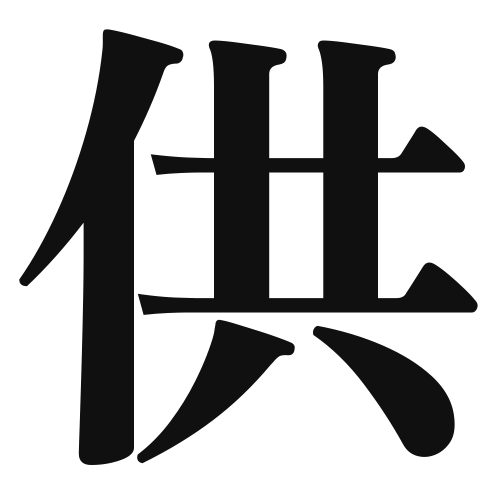1. Overview of Meaning
The kanji “供” (pronounced “kyou” or “tomosuke”) primarily means “to provide” or “to offer.” It is often used in contexts related to supplying something or serving others.
2. Formation and Radical
Formation of the Kanji: The kanji “供” is a compound character that combines elements to convey its meaning. It consists of the radical for “person” (人) on the left, indicating a connection to people, and the character “供” on the right, which relates to offering or providing.
Radical: The radical of “供” is 人 (hito), which means “person.” This radical emphasizes the human aspect of providing or serving.
3. Examples of Usage
Common Words and Phrases: Some frequently used words that include “供” are:
- 供給 (きょうきゅう, kyoukyuu) – supply
- 供養 (くよう, kuyō) – memorial service
- 供覧 (きょうらん, kyōran) – presentation
Example Sentences in Daily Conversation:
- この商品はお客様に供給されています。
(This product is supplied to customers.) - 彼は祖先の供養を大切にしています。
(He values the memorial service for his ancestors.)
4. Synonyms and Antonyms
Similar Kanji: A kanji with a similar meaning is “提供” (ていきょう, teikyō), which also means “to provide” but often implies a more formal or structured offering.
Opposite Kanji: An antonym is “奪う” (うばう, ubau), which means “to take away” or “to seize,” representing the opposite action of providing.
5. Cultural and Historical Background
Connection to Japanese Culture: The concept of “供” is deeply rooted in Japanese culture, particularly in the context of rituals and offerings to ancestors and deities. It reflects the importance of respect and gratitude in Japanese society.
Proverbs and Idioms: One common saying is “供に供えよ” (ともにそなえよ, tomoni sonaeyo), which means “to offer together,” emphasizing the value of community and shared offerings.
